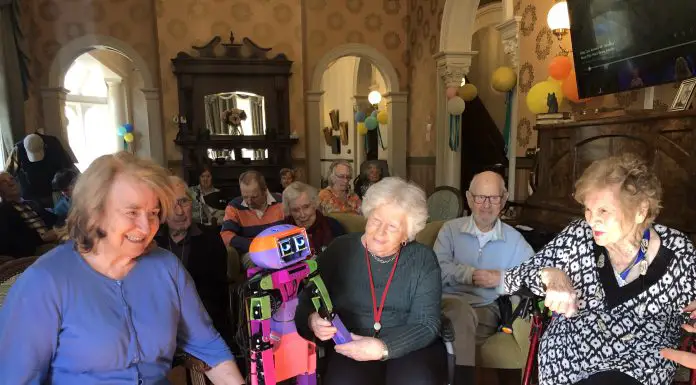When registered nurse Jocelyn Hofman clocks onto her afternoon shift at 5pm she looks after two houses and 40 residents by herself.
When the night nurse comes on, they are the responsible registered nurse for 120 residents.
“Whenever we give handovers to each other, we give a big brief and they say how chaotic it is for one RN [registered nurse] for everything happening in the hostel,” she said.
“People don’t go to residential aged care for no reason, they go there because they can’t look after themselves. They have chronic issues.”
Ms Hofman’s daily grind will one of the most critical issues facing the Australian government and the Royal Commission into Aged Care Quality and Safety ahead of the release of the final report this Friday.
The number and ratios of nurses across the aged care system are critical issues for the sector and the union representing their profession.
As some providers have launched a pre-report campaign for additional funding for the sector, the Australian Nursing & Midwifery Federation this week repeated its calls for drastic change.
Federal Secretary Annie Butler said over the last decade there had been a significant decline in the time nurses spent with residents in aged care, as the sector employed more personal care workers.
“Mandated ratios is the lynchpin of reforms for the aged care sector,” she said.
The union is calling for ratios of nurses, both enrolled and registered nurses, across the aged care sector.
“Current research demonstrates the gaps in care for our elderly in nursing homes – on average nursing home residents are receiving only two hours 50 minutes of care per day, well below the four hours 18 minutes they should be getting,” the union said.
“Primarily, this is because there is no evidence based minimum staffing standard for nursing homes and no national laws to guarantee appropriate ratios of qualified nursing staff and aged care workers. Too often there may be only one registered nurse manage the care for over 100 nursing home residents, or only one carer to feed, bathe, dress and mobilise 16 residents in less than an hour.”
It has called for five recommendations to create a sustainable aged care industry that allows for quality care.
These are mandated staffing ratios with minimum staffing levels and a skills mix; legislated requirements for clinical governance, leadership, and expertise; legislated transparency and accountability measures; guaranteed workforce capacity and capability; and regulation for currently unregulated care workers.
Ms Butler said the industry needed clinical representatives on the boards of companies operating aged care so they were aware of the on-the-ground requirements.
She said the minimum standards for personal care should be set at four hours and 20 minutes per person per day, with a mixture of 30 per cent of that time with a registered nurse, 20 per cent with an enrolled nurse and 50 per cent with a personal care worker.
With the push to home care expected from the Royal Commission, Ms Butler said home care staffing would also require more trained and registered workers.
“Understandably, the royal commission heard – very much – a desire from people out in the community to stay in their own homes as long as possible,” she said.
“Many of us would want to achieve that, of course, but it’s a terrible thing to think that people want to do that because they’re terrified of going into residential aged care.
“If we had in place the measures that we’ve talked about, most particularly the right numbers of the right types of staff, we could make it a place that people didn’t need to be so scared of, where we could see proper care.”
She said the AMNF had laid out an implementation plan for staffing over the next five years, incorporating more secure positions for graduates and people on insecure contracts, and free training for enrolled nursing.
More disclosures for families and the public should be mandatory for aged care provider use of taxpayer funds, she said, including payroll data for staff numbers, spending on food and continence devices and other required items.
She pointed to the US, where providers were required to report on similar data when using public funds.
“We want to see legislated transparency measures,” she said. “That [should be] disclosed to people when they’re making decisions about facilities they are going into or where they put their loved one into.”











‘… the royal commission heard – very much – a desire from people out in the community to stay in their own homes as long as possible.’
All well and good until …
For a resident living in a retirement village and using home care services to delay the eventual or inevitable move to residential aged care, the best and lasting effect of that (home-based) care can be compromised or negated by a bloody-minded and inept village manager, such as in the provision of building maintenance services.
I know- my mother experienced just such a situation, driving her to finally, of her own volition and with exact self-determination, to self-admit into residential aged care- at the age of 91.
Inspirational? Well, yes, but under the circumstances, simply the desperate act of someone desperate to get out of a sad and frustrating grind.
Retirement village operators are already crowing about the combined quality of life and care package they can provide but in the end it all comes down to the manager and the staff he or she has seconded or contracted. Transparency in decision-making is not always a given, despite residents’ committees.
And my mother? Since Feb., 2018 when she moved to the RACF, she’s never been happier. A key ingredient: It’s how you programme and manage your mind, heart and thoughts: realistic expectations; more gratitude. And wearing a smile.